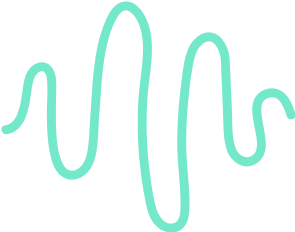Interview Scoring Sheet : a Guide with Template

One candidate leaves a great impression, but you’re not sure why, while another seems perfect on paper but doesn’t shine in the interview ?
That’s where interview scoring sheets come in, giving you a clear evaluation structure.
In this article, you’ll learn how to build an effective interview scoring sheet, how to customize it to your role’s specific needs, and how to automate the process.
Why Use an Interview Scoring Sheet?
An interview scoring sheet is a structured tool that helps you evaluate job candidates based on predefined criteria. For each category, you assign a numerical score (e.g., from 1 to 5), which allows you to rate the candidate’s performance in a standardized way.
Using an interview scoring sheet simplifies your hiring process :
- You ensure a consistent and fair by using the same set of criteria
- With a scoring sheet, you also save time. Each interview stays focused because you’re using predefined criteria. After the interview, comparing candidates is quicker because their scores are organized in the same way.
- Scoring sheets also allow you to gather input from your whole hiring team. After everyone scores the candidate, you can easily compare the results. This way, you get a more complete picture of each candidate’s strengths and weaknesses.
- Over time, using a scoring sheet helps you improve your hiring process. You can look back at past scores and see which skills actually contributed to success in the role. If you notice certain skills consistently leading to better performance, you can adjust your scoring sheet to emphasize those.
How to Structure a Scoring Sheet

To ensure structured and fair evaluation, you need a well-defined structure for your scoring sheet. Here’s how you can organize it:
Define the key skills and competencies :
Start by identifying the specific skills and attributes that are essential for the role. These should align with the job description and the actual demands of the position. For example, you might include :
- Technical skills (e.g., proficiency in certain software or programming languages)
- Soft skills (e.g., communication, teamwork)
- Cultural fit (e.g., alignment with company values)
You can group the criteria by category, like technical qualifications, interpersonal skills, and company fit.
Create a rating scale
Use a numerical scale to evaluate each skill or competency. A common system is a 1 to 5 scale, where 1 indicates the candidate lacks the required skill, and 5 shows they are highly proficient. For example:
- 1: Does not meet expectations
- 2: Partially meets expectations
- 3: Meets expectations
- 4: Exceeds expectations
- 5: Far exceeds expectations
Be sure to define what each number means to avoid different interpretations by interviewers.
Assign weight or priority to each skill
Not all skills carry the same importance. Assigning weights to each skill helps you prioritize critical competencies.
For instance, a technical skill that’s crucial for the role could be given a higher weight than a soft skill that’s desirable but not essential. You could use coefficients to reflect this priority, like weighting a technical skill at 5 and a soft skill at 2.
Include a section for comments
Next to each skill or rating, provide space for qualitative feedback. This section is crucial because it gives context to the score and allows interviewers to note any standout moments or concerns. It helps you understand why a candidate received a particular score beyond the numerical rating.
Tally the total score
After rating each skill, sum the scores to get a total. This allows for a quick comparison of candidates based on their overall performance. Additionally, you can include a decision section, where you check whether the candidate is moving to the next round, rejected, or if a decision is pending.
Interview Scoring Sheet Template

Below is a detailed template that you can copy, paste, and personalize to fit your specific hiring needs. You can also download it here.
Job Title: [Insert job title]
Date: [Insert interview date]
Candidate Name: [Insert candidate name]
Skills and Competencies
Use the rating scale (1-5) for each competency, and provide specific feedback where needed.
- Technical Skills
- Skill 1: [Insert technical skill, e.g., "Proficiency in React"]
- Rating: [1-5]
- Comments: [Insert feedback on the candidate's performance in this area]
- Priority: [Insert coefficient if weighted, e.g., 5]
- Skill 2: [Insert technical skill, e.g., "Data Analysis"]
- Rating: [1-5]
- Comments: [Insert feedback on the candidate's performance in this area]
- Priority: [Insert coefficient if weighted, e.g., 4]
- Skill 1: [Insert technical skill, e.g., "Proficiency in React"]
- Soft Skills
- Communication: [Insert rating]
- Comments: [Insert feedback on clarity, active listening, etc.]
- Priority: [Insert coefficient]
- Problem-solving: [Insert rating]
- Comments: [Insert feedback on analytical thinking or creative solutions]
- Priority: [Insert coefficient]
- Communication: [Insert rating]
- Cultural Fit
- Alignment with company values: [Insert rating]
- Comments: [Insert feedback on how the candidate’s values align with your organization]
- Priority: [Insert coefficient]
- Alignment with company values: [Insert rating]
- Leadership (if applicable)
- Team leadership or project management: [Insert rating]
- Comments: [Insert feedback on leadership style, ability to motivate others]
- Priority: [Insert coefficient]
- Team leadership or project management: [Insert rating]
Additional Notes / Observations
Use this section to note any additional observations about the candidate’s responses or behavior during the interview. This is a useful space to highlight any standout moments, potential concerns, or important details that the rating system alone may not cover.
Decision
Based on the total score and your analysis, indicate your decision on the candidate’s progression.
- Candidate selected for the next round
- Candidate not selected
- Decision pending
Main Reasons for Decision:
Provide a brief summary of the candidate’s strengths and areas for improvement. This helps clarify why the candidate is or isn’t moving forward in the process.
- Strengths: [Insert key strengths]
- Areas for improvement: [Insert areas for development]
Total Score:
Sum up the total scores based on the rating scale and weights assigned to each skill.
- Overall Score: [Insert total score]
How to Personalize This Template:
- Technical Skills: Add specific technical competencies relevant to the job position. For example, for a software developer, you might list "Proficiency in Python" or "Experience with cloud computing."
- Soft Skills: Tailor this section based on what is most important to your company, such as "collaboration" or "decision-making."
- Cultural Fit: Adapt this category to your company’s core values. You can also include behavioral questions that probe how well the candidate aligns with your workplace culture.
- Weighting Skills: For roles where certain skills are more critical, adjust the priority or weight for each competency by using coefficients.
Automated Interview Scoring Sheet : Noota

Interview scoring sheet is a great tool, but it can take a lot of manual work to fill it. With tools like Noota, you can automate the management of your scoring sheets :
- Automatic Transcription of Interviews : During the interview, Noota captures every word spoken and converts it into a searchable transcript. This allows you to focus more on the candidate and less on note-taking. Post-interview, you can review the transcript to assess the candidate’s answers in detail, making sure you didn’t miss any key points.
- Real-Time Data Integration : Noota’s system can analyze the conversation in real-time and start filling in the scorecard based on key points the candidate touches on. For example, if the candidate discusses their experience with project management, Noota can flag this and suggest a rating based on the depth of their answer. This removes much of the manual work of assessing answers on the spot.
- Structured Summaries and Insights : After the interview, Noota provides a structured summary of the key competencies discussed. It automatically highlights strengths and areas for improvement, making it easier for you to decide whether the candidate should move forward in the process. These insights are directly tied to the scorecard, so you don’t have to manually enter feedback.
- Data-Driven Decision Making : Automated scorecards allow you to compare candidates side-by-side with objective data. You can look at their ratings across various competencies and easily identify who performed best. Over time, this data helps you refine your hiring process by showing which competencies lead to successful hires.
Want to make your hiring decisions more informed and less biased? Try Noota for free.
Leverage your Interview Data
AI interview notes, scorecard, follow-up, ATS integration, and more...
Related articles

Forget note-taking and
try Noota now
FAQ
In the first case, you can directly activate recording as soon as you join a videoconference.
In the second case, you can add a bot to your videoconference, which will record everything.
Noota also enables you to translate your files into over 30 languages.

.svg)
.svg)
.webp)

.png)
.webp)

.svg)
